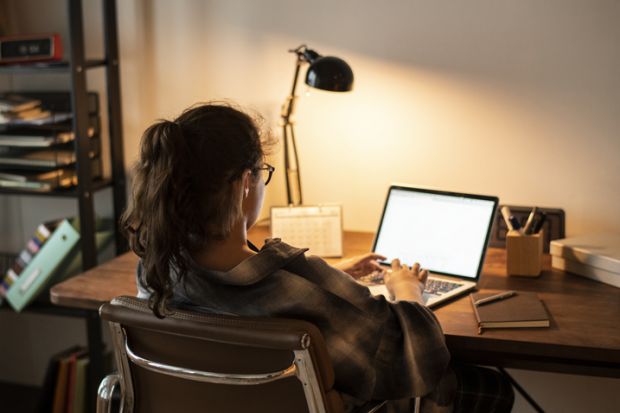COVID-19 safety brings a new school experience
April 27, 2020
Due to the ongoing novel coronavirus pandemic, many areas across the country and around the world have been under a shelter-in-place, meaning non-essential businesses and large gathering areas have been closed. As for schools, they have been switched to a virtual learning dynamic. This being a very unique situation not only to teachers but to students too, they are dealing with the shift in varied ways.
Eric Brandenburg, an eighth grader, has a generally positive view of virtual learning and the workload: “I like it better than normal school. The amount of work depends on the class – some teachers are giving a lot more work than usual and others are giving less. A benefit is that I can go at my own pace and I don’t have to wait for anyone. A downfall is there’s only a certain amount of time to ask questions in Google hangouts.”
Nicole Brandenburg, a sophmore, said, “I like it. I like sitting in my bed doing my work rather than at a desk. The work really depends on the class because some have become harder like for the ones you need a teacher to explain on the board but for others, it’s easier or the same to understand.”
There are benefits, in Nicole’s view, of doing work on a student’s own time. “Something good is I get to do it from my bed, having breaks when I need it, and going at my own pace. I don’t feel rushed trying to follow along if I fall behind or don’t understand something.”
One senior, already disappointed with his baseball season being cut short, and possibly cancelled, described his dislike of online schooling: “It sucks. I hate that we can’t be in a classroom with our friends, and have to do stuff online, and sometimes the computers just don’t work.” He feels that the workload hasn’t really changed, but there are definitely drawbacks to the experience. “There are no benefits. I would rather be with a teacher where I can ask questions and get the face to face instead of writing an email and waiting for a response.”
Many students are finding that getting work at home is easier by sticking to a schedule and finding an effective workspace. Eric said, “I work in the place I’m most comfortable, so in my room or in the kitchen if I’m making food. I normally just wake up and do my work in the order of the day so I don’t forget a class. When I start depends on when I go to sleep. I usually wake up from 8 to 10.”
Nicole detailed her work environment: “In my bedroom – usually on my bed [is where she does her work]. I make a checklist of all my classes – I go through the order and check them off when I’m done. I make a list of stuff I have due in the upcoming days to keep track of it. When I start varies – my alarm goes off at 8 now, but I used to just get up whenever and start. I get very distracted without a set schedule. I always go off task if I don’t get into a good mindset.”
It seems that most students are finding it best to go through each class and then move on to the next. One senior detailed what his school day is like: “I do my work in my dining room and I do it [his work] by period of the day. When I start varies depending on how I wake up. I can start the day at 10 or 12. It [not having a set schedule] doesn’t really affect me. I prefer running on my own time instead of in school when I had to be up at a certain time and go to a different class at a certain time.”
Each of the students agreed they had issues with Google Classroom links not working correctly, and questions they had not being answered in a way they understood in an email. They also agreed on giving students a specific time during that day when they could directly ask questions face-to-face.
As we proceed into uncharted territory, virtual schooling should continue to improve as teachers are giving their students the chance to voice their concerns and suggest changes. During this time, society must realize who keeps the world turning: it is not just the big powerful people in charge of companies – it is the teachers, janitorial staff, fast-food workers, and grocery store employees as well. Understand everyone is doing the best they can in these circumstances, and staying indoors to protect not only yourself, but others around you.
